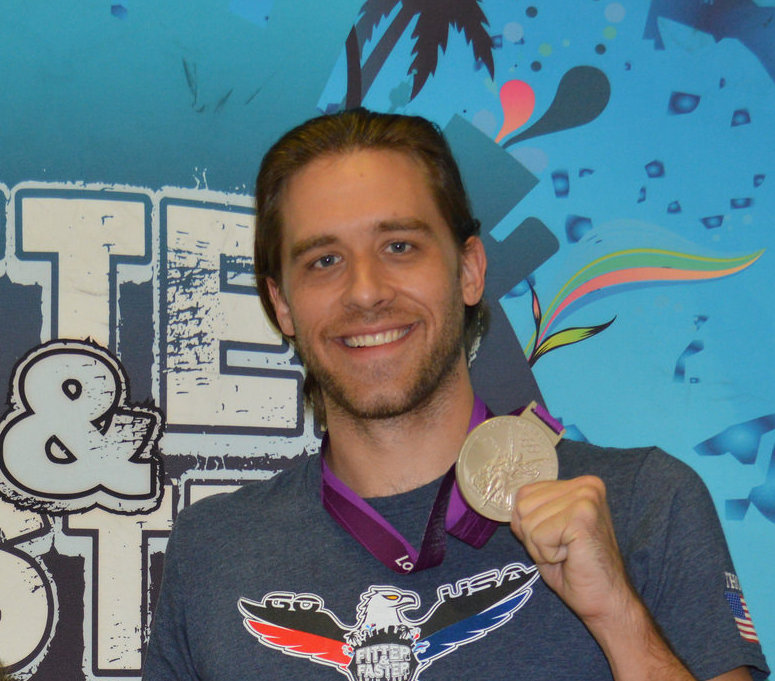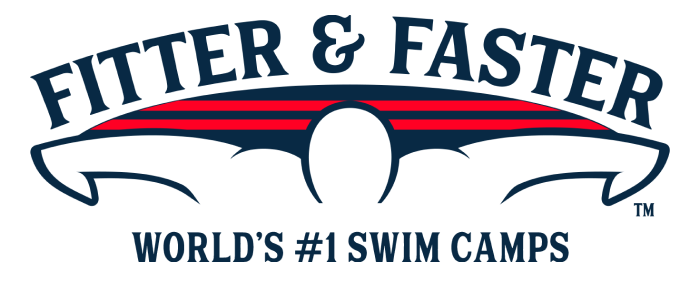Frisco, Texas Swim Camp Series for Ages 12 & over
Texas Ford Aquatics
8353 Legacy Dr,
Frisco,
TX 75034
- days
- hours
- minutes
- seconds
Introduction
Fitter & Faster is returning to Texas Ford Aquatics in Frisco, Texas to produce 2 swim camps for competitive swimmers ages 12 & over during 2024! CLICK HERE for the swim camp page for ages 9 to 11.
FRISCO, TEXAS SWIM CAMP SERIES (Ages 12 & over)
-> Comprehensive Freestyle Racing Swim Camp (October 19 & 20)
-> Comprehensive Backstroke Racing Swim Camp (December 14 & 15)
Click the “Curriculum Menu” below for details about each swim camp!
-> Availability in each session is limited to ensure the highest level learning experience.
-> SAVE when you purchase the “Entire Swim Camp Bundle” for your swimmer.
Select a curriculum below
COMPREHENSIVE FREESTYLE RACING SWIM CAMP - October 19 & 20
Freestyle is the first stroke we learn. It’s the stroke we swim the most at practice. There are more freestyle races and relays at meets... and it is the fastest stroke to move through the water. As with any other stroke, the more efficient and powerful your technique - the more success you will experience with your practices and freestyle races as your career progresses. Over two days, your swimmer, no matter their level, will improve their freestyle technique, racing and training skills!
- DAY 1 (Saturday, Oct 19): FREESTYLE TECHNIQUE: Cultivating good habits to swim high level freestyle begins as soon as you learn the stroke. Even if your swimmer is already in high school - it’s never too late to begin practicing techniques that will drastically improve their efficiency, power and times. Today, your swimmer will work on techniques to strengthen their bodyline, catch, kick, pull, and breathing pattern.
- Bodyline: A freestyle race is going to be fastest with the proper bodyline. Even the slightest adjustment of the chin, neck, and/or back can make a huge difference. As swimmers mature in the sport and grow physically, their body position shifts and often bad habits are created. Participants will learn and practice proper posture and engagement of their core to have a strong foundation for better technique - creating a full-body connection for more hydrodynamic and efficient strokes.
- Rotation: Freestyle is fastest and most efficient when a swimmer’s body is “rotating” around their spine with each stroke. This part of swimming freestyle has a big effect on maintaining a proper bodyline. Participants will practice activating their core muscles to form a powerful connection from head to toe with every stroke - resulting in faster freestyle.
- Kicking: A swimmer’s kick is the motor behind their freestyle! There are obviously proper and improper ways to kick which we will review at the camp. Just as important, however, is practicing the complexities of how and when swimmers need to “shift gears” in their legs to become stronger and faster racers.
- Pull: The pull in freestyle keeps a swimmer balanced and accelerating forward. Essentially the best swimmers are creating a paddle with every stroke. The clinicians will work with participants to establish an early vertical forearm “the catch”, enabling the swimmer to put immediate pressure back on the water. Properly completing the stroke keeps the swimmer moving forward efficiently and fast.
- DAY 2 (Sunday, Oct 20): FREESTYLE RACING AND TRAINING SKILLS: The technique for swimming a fast freestyle race changes depending on the distance. Learning to prioritize tempo and length of stroke, while maintaining efficiency has a huge impact on maximizing speed for sprints or increasing endurance for distance races.
- Stroke Length: A long stroke will enable your swimmer to “catch” and hold onto more water to propel them as they swim. Whereas, a short stroke is inefficient and not sustainable for very long. The clinicians will work with participants on this important skill for fast swimming.
- Tempo: Tempo is the rate at which a swimmer is moving their arms and legs. When sprinting short races many swimmers often tend to take too many strokes (“spin their wheels”) and not “hold onto the water”. At this camp we will explore different tempos that suit your swimmer for different distances.
- Pacing/Control: A swimmer’s tempo will change depending on the race that they are swimming. It may also change at different points during the same race! Your elite clinician will teach participants how to manipulate their tempo, speed and energy at different points in a race. This is called Pacing or “Control”.
- Breathing Pattern: Establishing a breathing pattern will help the swimmer stay focused and relaxed during their swim. It will also help them finish the race with enough oxygen to close the race at full speed.
- Speed Set: At the end of this session your swimmer will do a short and fast swim set to practice everything they have learned over the past two days.
COMPREHENSIVE BACKSTROKE RACING SWIM CAMP - December 14 & 15
Over 2 days, swimmers will work with Fitter and Faster’s world-class clinicians to strengthen their backstroke technique and apply racing and training tactics that will lead to better performances in their competitions!
- DAY 1 (Saturday, Dec 14): BACKSTROKE TECHNIQUE: Cultivating good habits to swim high level Backstroke begins as soon as you learn the stroke. Even if your swimmer is already in high school - it’s never too late to begin practicing techniques that will drastically improve their efficiency, power and times. Today, your swimmer will work on techniques to strengthen their bodyline, catch, kick, and pull - resulting in faster backstroke races.
- Bodyline: A competitive swimmer’s bodyline is the key to fast swimming. The name of the game is to eliminate all extra movement of the body including even the slightest bobbing, wiggling. Participants will learn and practice proper posture and engagement of their core to have a strong foundation for better technique - creating a full-body connection for more hydrodynamic and efficient backstroke.
- Rotation: Backstroke is fastest and most efficient when a swimmer’s body is “rotating” around their spine with each stroke. This part of swimming Backstroke has a big effect on maintaining a proper bodyline. Participants will practice activating their core muscles to form a powerful connection from head to toe with every stroke - resulting in faster backstroke!
- Kick: A swimmer’s kick is the motor behind their Backstroke! There are obviously proper and improper ways to kick which we will review at the camp. Just as important, however, is practicing the complexities of how and when swimmers need to “shift gears” in their legs to become stronger and faster racers.
- Pull: Just like in freestyle, the pull in backstroke keeps a swimmer balanced and accelerating forward. Essentially the best swimmers are creating a paddle with every stroke. The clinicians will work with participants to establish an early vertical forearm “the catch”, enabling the swimmer to put immediate pressure back on the water. Properly completing the stroke keeps the swimmer moving forward efficiently and fast.
- DAY 2 (Sunday, Dec 15): BACKSTROKE RACING AND TRAINING SKILLS: On Day 1, participants practiced high performance backstroke techniques. Now, let’s leverage these skills to develop strong racing and training habits. Learning to prioritize tempo and length of stroke, while maintaining efficiency has a huge impact on maximizing speed in backstroke.
- Stroke Length: A long stroke will enable your swimmer to “catch” and hold onto more water to propel them as they swim. Whereas, a short stroke is inefficient and not sustainable for very long. The clinicians will work with participants on this important skill for fast swimming.
- Tempo: Tempo is the rate at which a swimmer is moving their arms and legs. When sprinting short races many swimmers often tend to take too many strokes (“spin their wheels”) and not “hold onto the water”. At this camp we will explore different tempos that suit your swimmer for their backstroke races.
- Pacing/Control: A swimmer’s tempo will change depending on the backstroke race that they are swimming. It may also change at different points during the same race! Your elite clinician will teach participants how to manipulate their tempo, speed and energy at different points in a race. This is called Pacing or “Control”.
- Backstroke Starts: The fastest part of every single race is the start - that’s no different for backstroke! Your swimmer is going to learn and practice starting a high performance backstroke race. We’re going to work on a “clean”, fast water entry in which the athlete carries the momentum from the start into their streamline, underwater dolphin kicking and breakout.
- Speed Set: At the end of this session your swimmer will do a short and fast swim set to practice everything they have learned over the past two days.
SESSION START TIMES:
- DAY 1: Check in 4:30 PM, Camp 4:45-7:45 PM
- DAY 2: Check in 12:15 PM, Camp 12:30-3:30 PM
ASK QUESTIONS
Swimmers and parents are invited to ask the clinicians questions during a Q&A session. Gain insight into their training regimen, diet and nutrition, and recovery tactics.
WATCH THE CLINICIANS
Observe clinicians swim at full speed and demonstrate a progression of perfectly executed drills to achieve powerful, efficient and fast swimming.
PUT YOUR SKILLS TO THE TEST
Throughout the camp, swimmers will practice what they've learned with some of the world's most elite Swimmer Clinicians and coaches!
Take a photo, get autographs, and chat with your clinicians!

Nick Thoman
Size matters so much less when you have great technique... and your clinician is living proof of that. At one point, Nick Thoman was known as the world's greatest short course swimmer in the world. His starts and turns were a weapon - he was shorter than most of his top competition, but HE was the world record holder in the 100 short course meter backstroke AND he is an Olympic gold medalist. Learn to weaponize great technique, no matter your size or strength, to improve at this clinic with Nick Thoman!

Elite Clinician
Fitter and Faster clinicians are Olympians and National Team members who have achieved at the highest level of the sport of swimming... and who have the unique skill to teach what they know from a technical perspective to swimmers of all ages and abilities.
Inquisitive, Educated Swimmers are Faster Swimmers! Sign up today!








